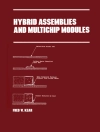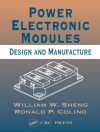Porous materials with ultrahigh surface area are of great interest for potential applications in energy storage and environmental remediation. Porous Polymers describes the significant recent progress in the development of different porous frameworks, with a particular focus on the relationship between structure design, synthesis method and properties.
The book starts with an introduction to porous materials and their functions followed by chapters looking at the design of porous polymers, synthesis methods of porous polymers (reversible methods, irreversible methods, copolymerization methods and self-polymerization methods); characterisation of porous polymer structures and post-synthesis techniques of porous polymers (lithiation, sulphonation, carbonization, grafting). Specific chapters then detail different porous materials systems such as conjugated microporous polymers (CMPs); covalent organic frameworks (COFs); hyper-crosslinked polymers (HCPs); polymers of intrinsic microporosity (PIMs); and porous aromatic frameworks (PAFs).
Written by active researchers in the field, the book provides a comprehensive overview of different porous polymer systems for researchers and graduate students in chemistry and materials science working on novel materials and those interested in the energy and environmental applications.
Spis treści
Introduction; Design Principles of porous polymers; Chemical Synthesis of porous polymers; Recent Developments of Hypercrosslinked Microporous Organic Polymers; Polymers of intrinsic microporosity; Rational Design of Covalent Organic Frameworks for High Performance Gas Storage; Conjugated Microporous Polymers; Porous Aromatic Frameworks; Functionalisation of Porous Polymers; Applications of Porous Polymers; Conclusion












